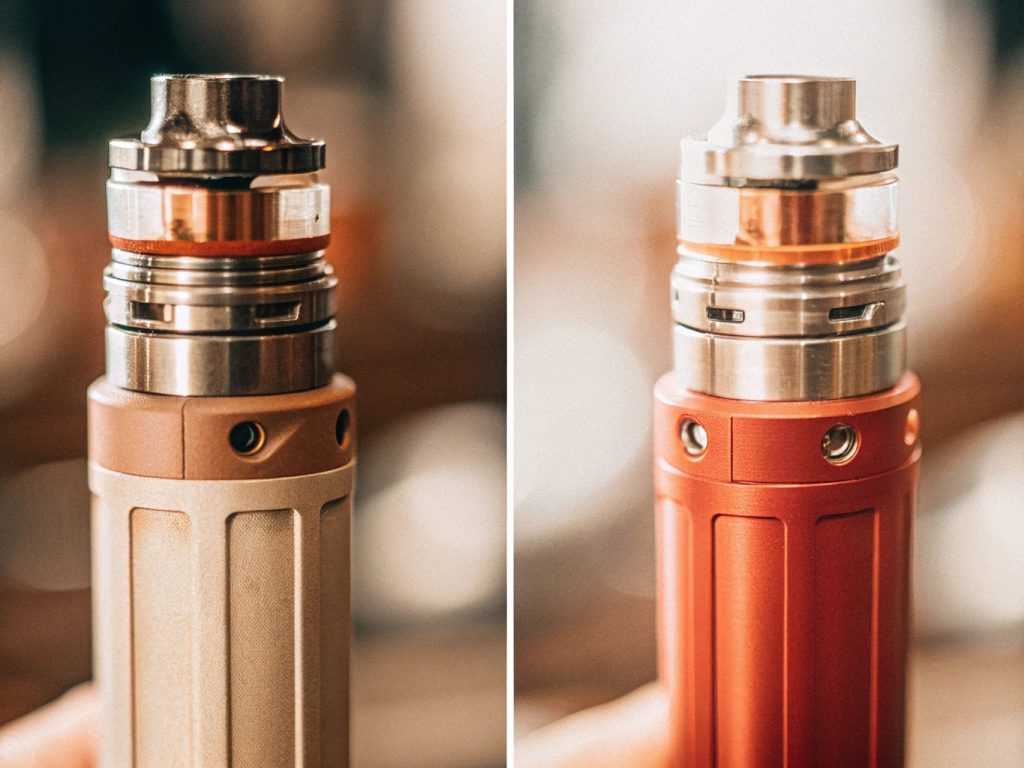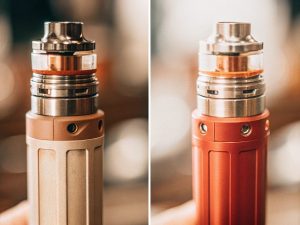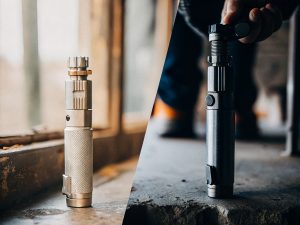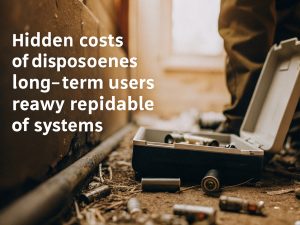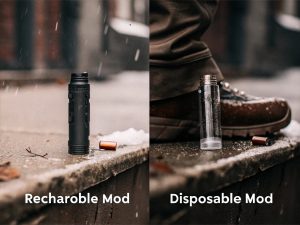You love the simplicity of your Raz disposable vape. But as you use them, you can’t help but wonder if they are built to be durable or just a convenient, temporary solution.
Raz vapes are engineered for ultimate convenience, not long-term durability. Their construction is robust enough to last precisely for their intended single-use lifecycle. They are built to be reliable until the e-liquid depletes, then responsibly discarded, prioritizing ease of use over longevity.
From my factory floor in Shenzhen, I see every screw and circuit that goes into a vape. For years, we built heavy, metal "mods" designed to be a vaper’s long-term companion. But the market has taught me a crucial lesson, often reinforced by my client Matt, a sharp buyer from the U.S. He always says, "My customers don’t want a hobby; they want a solution." This mindset changes everything. A disposable isn’t designed to be a family heirloom. It’s designed to solve a problem, flawlessly and immediately. This trade-off between lasting forever and working perfectly right now is the key to understanding the modern vape world.
How Durable Are Raz Disposable Vapes Compared to Rechargeable Devices?
You’ve accidentally dropped your disposable vape before. You worry if its plastic body is tough enough for everyday life, or if one bad slip means it’s game over.
Raz disposables are built from sturdy plastics and are surprisingly resilient for their intended short lifespan. However, rechargeable devices, often made with metal alloys, are fundamentally more durable and are designed to withstand years of regular use, drops, and wear.
Diving Deeper: Engineering for a Specific Lifespan
When we design a disposable vape, the goal is "lifespan-matched durability." It needs to be tough enough to survive in a pocket or a purse and handle occasional drops without breaking before the e-liquid runs out. A traditional, rechargeable mod is designed with a completely different philosophy: "long-term survivability."
Here’s a look at the different design approaches:
| Feature | Raz Disposable Vape | Rechargeable Device (Mod/Pod) |
|---|---|---|
| Body Material | High-grade Polycarbonate (PC) or PCTG plastic | Zinc Alloy, Aluminum, Stainless Steel |
| Design Goal | Lightweight, cost-effective, and reliable for one cycle | Heavy-duty, premium feel, user-serviceable |
| Weak Points | Sealed body; a single failure ends its use. | Replaceable parts (tank glass, battery door) |
| User Expectation | Works perfectly out of the box until it’s empty. | Lasts for years with proper care and parts. |
We use materials like PCTG plastic for disposable casings because it’s impact-resistant and doesn’t crack easily. The internal components are secured to withstand normal jostling. But this is very different from a zinc-alloy mod, which feels heavy in the hand because it’s built to protect internal electronics from much harder impacts over a period of years. A disposable is built to last for 9000 puffs, not three years.
Does Convenience Outweigh Longevity in Daily Use?
You’re a busy person. The idea of cleaning tanks and changing coils on a regular vape seems like a chore you just don’t have time for, making disposables very appealing.
For many users, convenience absolutely outweighs longevity. The freedom from maintenance, refilling, and technical knowledge is the primary reason for choosing a disposable. It fits a fast-paced lifestyle where simplicity and time-saving are more valuable than long-term durability.
Diving Deeper: The Value of "Effortless"
The debate between convenience and longevity is really a personal one. It depends entirely on your priorities. Think about coffee: some people love the ritual of grinding beans and using a French press (longevity, control), while others just want a K-cup to work instantly (convenience). Vaping is no different.
Matt, my client, explained this perfectly. He said his customers see disposables as a service, not just a product. They are paying to avoid the "hassle factor."
Here’s how to decide what matters more to you:
-
Choose Convenience (Disposables) if:
- You have limited time for upkeep.
- You dislike technical tasks like coil building.
- You are new to vaping and want the simplest starting point.
- You value portability and having a lightweight device.
-
Choose Longevity (Rechargeables) if:
- You are a heavy, daily user and want to minimize long-term costs.
- You enjoy customizing your vape experience (airflow, power).
- You don’t mind performing routine maintenance.
- You prefer a more substantial, durable-feeling device.
For a huge segment of the market, the 10-15 minutes saved each week by not having to maintain a device is far more valuable than having a device that lasts for years. It’s a calculated trade-off.
What Are the Hidden Costs of Short-Term Disposable Vaping?
You love the low initial price of a Raz vape. But as you buy them regularly, you start to wonder if there are other, less obvious costs to this convenience.
The main hidden cost of disposables is the higher long-term expense for heavy users compared to refillable systems. Another cost is environmental; you are buying and discarding an entire device, including the battery, with every purchase, contributing to e-waste.
Diving Deeper: Calculating the True Price
"Cost" isn’t just the sticker price. When we talk about disposables, the true cost is a combination of financial outlay over time and environmental responsibility.
The Financial Cost:
The appeal of a disposable is its low entry barrier. A single Raz TN9000 is much cheaper than a full rechargeable kit. But the economic model is based on repeated purchases.
- Disposable Model: You pay for the e-liquid, the battery, the coil, and the casing every single time.
- Rechargeable Model: After the initial hardware investment, you are mostly just paying for e-liquid and occasionally an inexpensive coil.
| Let’s look at a six-month projection for a moderate vaper: | Cost Type | Disposable User (Approx.) | Rechargeable User (Approx.) |
|---|---|---|---|
| Initial Cost | $18 (one device) | $40 (starter kit) | |
| 6-Month Cost | ~$216 (12 devices at $18) | ~$115 ($40 kit + $75 liquid/coils) | |
| Difference | Simple but more expensive. | More effort but saves ~$101. |
The Convenience Tax:
You can think of the extra cost as a "convenience tax." You are paying more to outsource the maintenance and effort to the manufacturer. For many, this is a price worth paying.
How Does Environmental Impact Factor Into the “Built to Last” Debate?
You finish your disposable vape. As you hold the empty device, you feel a bit guilty just throwing it away. You wonder about its impact and if a long-lasting device is better for the planet.
The environmental impact is a critical factor. A device "built to last," like a rechargeable mod, creates significantly less waste over time. A disposable, by its nature, contributes more to e-waste because the battery and circuitry are discarded after a single use.
Diving Deeper: The Burden of E-Waste
This is the toughest challenge for the disposable industry, and one we are working hard on. A product that is not built to last physically puts a greater strain on our waste systems.
-
The Problem with Single-Use Electronics:
Each disposable vape contains a lithium-ion battery, a small circuit board, and a plastic shell. When thrown in the regular trash:- Batteries can leak toxic heavy metals into the environment and are a major fire risk in waste processing facilities.
- Plastics take centuries to degrade.
- Valuable materials in the circuitry are lost forever.
-
Longevity as a Form of Sustainability:
A rechargeable device that is used for two years replaces dozens, if not hundreds, of disposable devices. Its longevity is its greatest environmental strength. You only discard a small coil every few weeks and a battery every year or two, not the entire device.
The term "built to last" in this context becomes about more than just physical durability; it’s about sustainable design. The responsibility for a disposable user is to mitigate this impact by always taking used devices to an e-waste recycling center. It’s the necessary final step in the convenience lifecycle.
Conclusion
Raz vapes are expertly built for convenience, not for lasting forever. This design prioritizes an effortless user experience over long-term durability, a trade-off many modern consumers willingly make.
FAQ
Q1: How many puffs can I really expect from a Raz disposable?
Models like the Raz TN9000 are designed to deliver up to 9000 puffs. This will last a moderate vaper for one to two weeks, depending on puff length and frequency.
Q2: What happens if I drop my Raz vape in water?
Like any electronic device, a disposable vape is not waterproof. If submerged, it will likely stop working and should not be used. It’s best to dispose of it at an e-waste facility.
Q3: Are there any plans for more sustainable disposable vapes?
Yes, as a manufacturer, we are constantly researching more recyclable materials and "take-back" programs. The future of the industry depends on finding better solutions to reduce environmental impact.
Q4: Is a heavier vape always more durable?
Generally, yes. A heavier device is often made from metal alloys, which are more resistant to drops and bending than plastic. Weight is often a good indicator of a more robust build quality intended for longevity.
